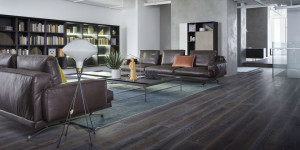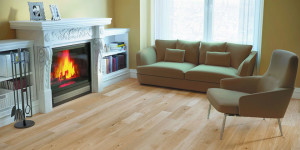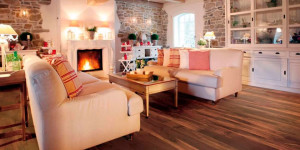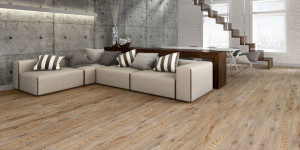Engineered wood flooring is composed of two or more layers of wood in the form of a plank. The top layer (lamella) is the wood that is visible when the flooring is installed and is adhered to the core. The lamella is the face layer of the wood that is visible when installed. Typically, it is a sawn piece of timber. The timber can be cut in three different styles: flat-sawn, quarter-sawn, and rift-sawn. Keep in mind that each cut will give the board a different final appearance.
The increased stability of engineered wood is achieved by running each layer at a 90° angle to the layer above. This stability makes it a universal product that can be installed over all types of subfloors above, below or on grade. Engineered wood is the most common type of wood flooring used globally.
There are several different categories of engineered wood flooring: All timber wood floors are made from sawn wood and are the most common category of engineered wood flooring. They do not use rotary peeled veneer, composite wood (such as HDF), or plastic in their construction.wood floors are mostly manufactured in 10mm/11mm/14mm/15mm/19mm/20mm thick with a Click loc system with 2G & 5G technology or t&g for installation.
Wood ply construction (“sandwich core”): Uses multiple thin plies of wood adhered together. The wood grain of each ply runs perpendicular to the ply below it. Stability is attained from using thin layers of wood that have little to no reaction to climatic change. The wood is further stabilised due to equal pressure being exerted lengthwise and widthwise from the plies running perpendicular to each other.
Finger core construction: Finger core engineered wood floors are made of small pieces of milled timber that run perpendicular to the top layer (lamella) of wood. They can be 2-ply or 3-ply, depending on their intended use. If it is three ply, the third ply is often plywood that runs parallel to the lamella. Stability is gained through the grains running perpendicular to each other, and the expansion and contraction of wood is reduced and relegated to the middle ply, stopping the floor from gapping or cupping.
An engineered flooring construction which is popular in parts of Europe is the hardwood lamella, softwood core laid perpendicular to the lamella, and a final backing layer of the same noble wood used for the lamella. Other noble hardwoods are sometimes used for the back layer but must be compatible. This is thought by many to be the most stable of engineered floors.
Engineered wood flooring has other benefits beyond dimensional stability and universal use. Patented installation systems allow for faster installation and easy replacement of boards. Engineered wood also allows for a floating installation where the planks are not adhered to the subfloor or to each other, further increasing ease of repair and reducing installation time. Engineered flooring is also suitable for underfloor and radiant heating systems.




